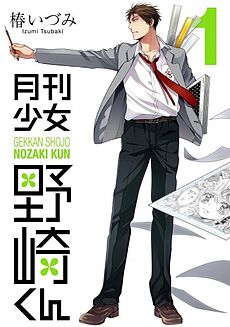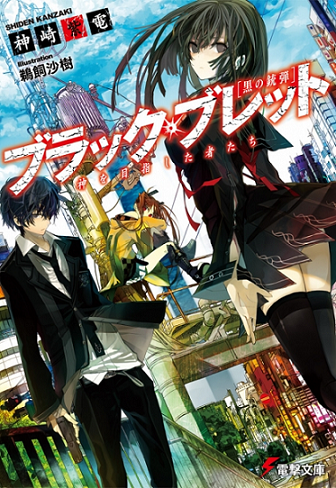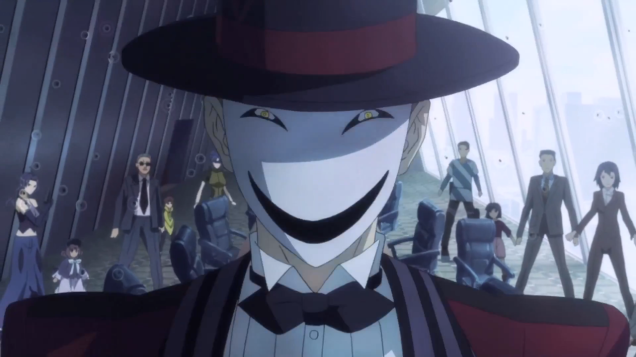Title: Majimoji Rurumo
Format: TV anime
Genre: comedy, ecchi, supernatural
Series Creator: Wataru Watanabe
Series Director: Chikara Sakurai
Studio: J.C.Staff
Series length: 12 episodes
Original Airing dates: July 9 – September 27 2014
Reviewed format: high def download with fan sub

Synopsis:
Shibaki is a high-school boy whose only interest is girls. Except he’s been branded as the most perverted boy at school and girls avoid him like the plague. One day he finds a book in the library about how to summon witches. He tries it as a joke, but it turns out to be the real thing. An apprentice witch named Rurumo appears to grant him a wish. Shibaki helps Rurumo and she in return refuses to take his soul. When the story starts, Shibaki wishes he could see Rurumo again. His wishes is granted immediately as Rurumo falls from the sky and crash lands in front of him. He finds out that as punishment for not taking his soul she’s been busted down to an apprentice demon. Now, she must complete the task of getting Shibaki to use up 666 magic tickets that grant wishes before she can become a witch again. However, what she doesn’t know is that each time he uses a ticket it shortens his life. When the last ticket is used up, Shibaki will die. Shibaki knows this because Rurumo’s familiar black cat Chiro tell him as part of the “contract” for giving him the tickets. Now, Shibaki has a choice, make a wish and help Rurumo become a witch again or resist the temptation and try to save his own life.
Review:
Oh, for fuck’s sake! Why did I ever bother with this show & keep watching it?!
Why do I keep watching shite like this?!
Majimoji Rurumo is another entry in the ever expanding subgenre of “hentai with a heart of gold”, where the central protagonist is an utter deviant but still manages to do the right thing whilst not ever growing up in any way, shape or form.
I pretty much lay this subgenre as part of the major problem as to why geek culture is so fucked up right now. Filled with self-entitled deadshits who think that the universe owes them copious amounts of poontang for the simple reason that they were born with external genitalia & haven’t raped anyone yet.
Douchebag du jour this time around is Shibaki Kota, who is only obsessed with getting near girls. To the point he will contemplate near sexual assault (or perform it in a cough comical fashion) but often gets beaten for his efforts. Due to his lecherous attitudes, no girl will go near him & they all call him Hentai (Pervert) Shibaki, before he is physically punished by the 3 all female members of the Discipline Committee. His shortsightedness in achieving his pervert goals means that he misses out on real opportunities to get to know women on a personal level. What makes it worse is that he is fully conscious of his habits & yet does nothing to amend them -even if he gets savagely beaten.
I do like the fact that Kota suffers punishment for his stupid perversions & at least he tries to act like a decent human being when he’s called upon to do so. Yet for all the good acts that he does, it doesn’t redeem him in the slightest for being an utterly useless perverted prick the rest of the time.
The basic plot is one that has been seen in much better (better being an utterly subjective & relative term here) series such as Sora no Otoshimono (Heaven’s lost Property), where hopeless pervert acquires access to a a stoic & slightly stupid girl who provides him with supernatural wish fulfilment -which me manages to always to screw up.
The provider of supernatural chaos in this case is witch-in-training (although was once a full witch) Magi Mojiruka Rurumo -who is utterly blank faced & quiet in every situation. Yet approaches every task, even though she is useless at them all, with utter diligence -despite constantly failing at everything besides most forms of magic. After she made a mistake granting Kota’s 1st wish (made accidentally whilst being ordered around by the Occult Club’s President), she was going to be punished again, until Kota saves her. She then returns with a book of 666 Wish Tickets but doesn’t know that once Kota uses them all, she has to take his soul.
The main thrust of the series is Kota basically doing his best to help Rurumo adjust to the human world whilst trying not to give into his selfish desires & use the tickets. When he does so, it’s usually for a selfless or ridiculously stupid reason (yet not perverted ones). Sometimes he helps the people around him but usually he’s aiding Rurumo in some way or trying to protect his porn stash from the Disciplinary Committee. Kota also helps Rurumo connect with those around them & it was probably these side characters that kept me watching.
Mainly the Disciplinary Committee, because they show several levels beyond their cliche rolls. The Chairwoman, Sukimo, despite being stern wants to be treated like a normal girl. Something which Kota does but, naturally, in a perverted way. Masako is the otaku secretary of the DC who keeps her cosplaying hobby secret from everyone but is drawn to Rurumo because she thinks that she’s a witch cosplayer (& because Kota told Rurumo to tell people that she is a cosplayer if anyone asks her about her witch clothing). Overly tall & exceptionally physically powerful Kyōko, whom I wish was developed more -both in terms of character & muscularity. The other highly shown & developed character is Chiro -Rurumo’s talking cat familiar. She often explains things to Kota as well as tries to protect Rurumo from the harsher aspects of her life. Including how she is bullied by the other witches for not having any real skills & being so trusting of everyone around her.

There are other characters who pop in & out but none are as memorable as the Disciplinary Committee but at least there are a couple of moments of genuine emotion & redemption.
The main one is Episode 6, in which Kota tries to hide the fact that he’s picking up some discarded swimsuit magazines in front of them female classmates & instead picks up a box with 3 abandoned kittens in it. He takes them home but his mum refuses to let him keep them, so he works hard to overcome the prejudices that the school has of him to find new owners for the 3 kittens. One of the kittens forms an immediate attachment to him, always saving the Magic Tickets whenever they fall out of his pocket. So, naturally, that kitten gets ill & dies -showing to Kota that even magic has its limits & can’t heal those destined to die or bring back the dead.
This should have been a growing moment for Kota, instead it’s forgotten about in the next episode & any progress in his development is abandoned as he goes back to stupid perverted slapstick gags. But at least Rurumo’s character develop progresses, as she begins to show signs of emotion & attraction towards Kota. For the simple reason that deep down he’s a good guy.
I could wail endlessly on about the hypersexualisation & fan service within the series but I’ll just end up hoarse. The boobs are bouncy, all the girls/women are drawn as cute as they can be but still have something odd about their face designs -hard to place really, might be the eye shape & size.
To be honest, I think one of the only reason I kept watching was because of the uber cute & catchy opening theme Seiippai, Tsutaetai! by Mimori Suzuko.
Overall, this series wasn’t great but it could’ve been a whole lot worse than it was. I still don’t know why I bothered with it, probably to see his Kota would redeem himself in any way. Since this is still from an on going manga, there wasn’t much major resolution but it wasn’t focussed on anything huge. Just Kota helping Rurumo as best he could whilst trying to still be an utterly useless pervert.
I will continue to blame series like this for the terrible behaviour of boys out there but like the human (read: hypocrite) that I am, I’ll keep watching such series until they series cross a line & make me feel physically ill.













































